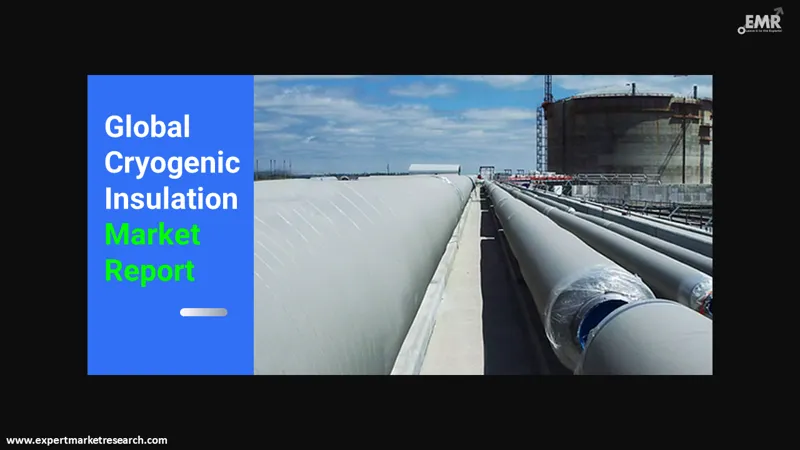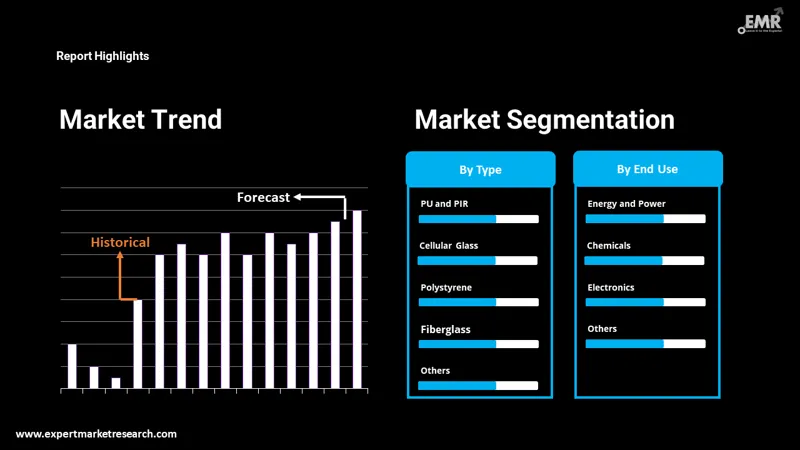
Consumer Insights
Uncover trends and behaviors shaping consumer choices today
Procurement Insights
Optimize your sourcing strategy with key market data
Industry Stats
Stay ahead with the latest trends and market analysis.
The global cryogenic insulation market is expected to grow at a CAGR of 7.70% during the period 2026-2035. North America, Europe and Asia are likely to be key markets.
Base Year
Historical Period
Forecast Period
Compound Annual Growth Rate
7.7%
2026-2035
*this image is indicative*
Read more about this report - REQUEST FREE SAMPLE COPY IN PDF
Rising global demand for liquefied natural gas (LNG) warrants high-performance technology for reliable transport and storage. Safe and efficient plants need be designed and developed. Extremely low temperatures ranging from -161 to -164 0C (112 to 109 K), at which natural gas is in a liquid state, places high demands on the technical infrastructure throughout the LNG value chain. All plant components and systems that come into contact with liquefied gas need to be very well insulated. This particularly includes pipework through which LNG is transported, and tanks liquefied gas storage. It is vital that tanks and pipework are adequately insulated from adjoining plant elements due to low temperature of the liquefied gas. This is also applicable to points at which mechanical forces need to be absorbed, including mounts or support bearings. Thermal bridges at such points must be avoided; doing so warrants high-performance cryogenic insulation materials that do not become brittle, are capable of absorbing high mechanical forces, and offer very low thermal conductivity.

Leading companies offer materials for cryogenic insulation; such solutions are expected to drive the global cryogenic insulation market. For example, Röchling offers materials specifically developed for cryogenic insulation. The company’s laminated densified wood Lignostone® cryogenic and fibre-reinforced composite material Durolight® have been successfully applied in several projects. Owing to their distinct properties, the solutions enable safe and reliable LNG transport and storage.
Lignostone® cryogenic and Durolight® reliably avoid thermal bridges, possess high mechanical stability, enable efficient transport and storage of LNG, are robust and low-maintenance, and have been approved/specified by several companies. Applications of cryogenic insulation materials include Ships (storage tanks, fuel tanks and pipe systems), Terminals (pipe systems, storage tanks and terminals), and Offshore (floating LNG and LPG ships, and bunkering tank supports).
ISOVER has developed the unique CRYOLENE solution for the insulation of cryogenic tank walls and roofs. CRYOLENE products are highly resilient mineral wool rolls designed to retain fibre elasticity over time at temperatures ranging from -1700C to +1200C.
Norplex-Micarta cryogenic insulation materials are engineered and produced particularly for very cold temperature applications in the energy, aerospace, medical and scientific devices, and heavy industry. NP500CR, a specially formulated glass-epoxy sheet material, is appropriate when requirement of superior thermal insulation and structural support unite with cryogenic temperatures. Due to its low moisture absorption, NP500CR could tolerate cycling between low and high temperatures better than several other options. Applications include LNG pipe systems, land, over the road, and ship bunkering tanks to superconducting magnets and fusion reactor insulation.
RT521M, another glass-epoxy material, is a cryogenic rated tube present in different medical and scientific devices, as well as multiple industrial applications for cryogenic storage.
MC330, a cotton-phenolic sheet grade, is a cryogenic material devised for use in applications where abrasiveness or hardness of glass reinforced materials is an issue to designers.
LNG is natural gas which when liquefied, has only 1/600 of its volume in a gaseous state. To liquefy, the natural gas is cooled down to -1640C. This reduction in volume makes LNG ideal for efficient transport and storage. Low LNG temperatures place high demands on plant components and the equipment employed for storage and transport of LNG (such as pipework systems carrying LNG, and tanks storing LNG). These pipes and tanks need to be permanently thermally insulated from adjoining plant components. This warrants cryogenic insulation. Rising LNG demand is expected to boost the global cryogenic insulation market. Growing demand for LNG, especially in Asia, is expected to boost market growth. In 2021, USA led export growth with a year-on-year increase of over 23 million mt. In 2021, China and South Korea led growth in LNG demand.

Read more about this report - REQUEST FREE SAMPLE COPY IN PDF
The EMR’s report titled “Cryogenic Insulation Market Report and Forecast 2026-2035 offers a detailed analysis of the market based on the following segments:
By type, the market is segmented into:
By cryogenic equipment, the market is classified into:
By end use industry, the market is divided into:
By region, the market is segmented into:
The report presents a detailed analysis of the following key players in the global cryogenic insulation market, looking into their capacity, and latest developments like capacity expansions, plant turnarounds, and mergers and acquisitions:
The EMR report gives an in-depth insight into the industry by providing a SWOT analysis as well as an analysis of Porter’s Five Forces model.




*While we strive to always give you current and accurate information, the numbers depicted on the website are indicative and may differ from the actual numbers in the main report. At Expert Market Research, we aim to bring you the latest insights and trends in the market. Using our analyses and forecasts, stakeholders can understand the market dynamics, navigate challenges, and capitalize on opportunities to make data-driven strategic decisions.*
Get in touch with us for a customized solution tailored to your unique requirements and save upto 35%!
The global cryogenic insulation market is projected to grow at a CAGR of 7.70% between 2026 and 2035.
The major drivers of the market include the rise in environmental awareness, infrastructural development, industrialisation, increase in investment in energy sector, huge investments in oil and gas industry, and surge in trade of natural gases.
Rising global demand for liquefied natural gas (LNG) and need of insulation in the energy and power and aerospace industries are the key industry trends propelling the market's growth.
The major regions in the industry are North America, Latin America, the Middle East and Africa, Europe, and the Asia Pacific.
The various types of cryogenic insulation in the market are PU And PIR, cellular glass, polystyrene, fibreglass, and perlite, among others.
Based on cryogenic equipment, the market is segmented into tanks, valves, vaporizers, and pumps, among others.
The several end-use industries of the market are energy and power, chemicals, metallurgical, electronics, and shipping, among others.
The major players in the industry are Armacell LLC, Lydall, Inc., BASF SE, Cabot Corporation, Röchling SE & Co. KG, and Johns Manville, among others.
Explore our key highlights of the report and gain a concise overview of key findings, trends, and actionable insights that will empower your strategic decisions.
| REPORT FEATURES | DETAILS |
| Base Year | 2025 |
| Historical Period | 2019-2025 |
| Forecast Period | 2026-2035 |
| Scope of the Report |
Historical and Forecast Trends, Industry Drivers and Constraints, Historical and Forecast Market Analysis by Segment:
|
| Breakup by Type |
|
| Breakup by Cryogenic Equipment |
|
| Breakup by End Use Industry |
|
| Breakup by Region |
|
| Market Dynamics |
|
| Competitive Landscape |
|
| Companies Covered |
|
| Report Price and Purchase Option | Explore our purchase options that are best suited to your resources and industry needs. |
| Delivery Format | Delivered as an attached PDF and Excel through email, with an option of receiving an editable PPT, according to the purchase option. |
Datasheet
One User
USD 2,499
USD 2,249
tax inclusive*
Single User License
One User
USD 3,999
USD 3,599
tax inclusive*
Five User License
Five User
USD 4,999
USD 4,249
tax inclusive*
Corporate License
Unlimited Users
USD 5,999
USD 5,099
tax inclusive*
*Please note that the prices mentioned below are starting prices for each bundle type. Kindly contact our team for further details.*
Flash Bundle
Small Business Bundle
Growth Bundle
Enterprise Bundle
*Please note that the prices mentioned below are starting prices for each bundle type. Kindly contact our team for further details.*
Flash Bundle
Number of Reports: 3
20%
tax inclusive*
Small Business Bundle
Number of Reports: 5
25%
tax inclusive*
Growth Bundle
Number of Reports: 8
30%
tax inclusive*
Enterprise Bundle
Number of Reports: 10
35%
tax inclusive*
How To Order

Select License Type
Choose the right license for your needs and access rights.

Click on ‘Buy Now’
Add the report to your cart with one click and proceed to register.

Select Mode of Payment
Choose a payment option for a secure checkout. You will be redirected accordingly.
Gain insights to stay ahead and seize opportunities.

Get insights & trends for a competitive edge.

Track prices with detailed trend reports.

Analyse trade data for supply chain insights.

Leverage cost reports for smart savings

Enhance supply chain with partnerships.

Connect For More Information
Our expert team of analysts will offer full support and resolve any queries regarding the report, before and after the purchase.
Our expert team of analysts will offer full support and resolve any queries regarding the report, before and after the purchase.
We employ meticulous research methods, blending advanced analytics and expert insights to deliver accurate, actionable industry intelligence, staying ahead of competitors.
Our skilled analysts offer unparalleled competitive advantage with detailed insights on current and emerging markets, ensuring your strategic edge.
We offer an in-depth yet simplified presentation of industry insights and analysis to meet your specific requirements effectively.
Share